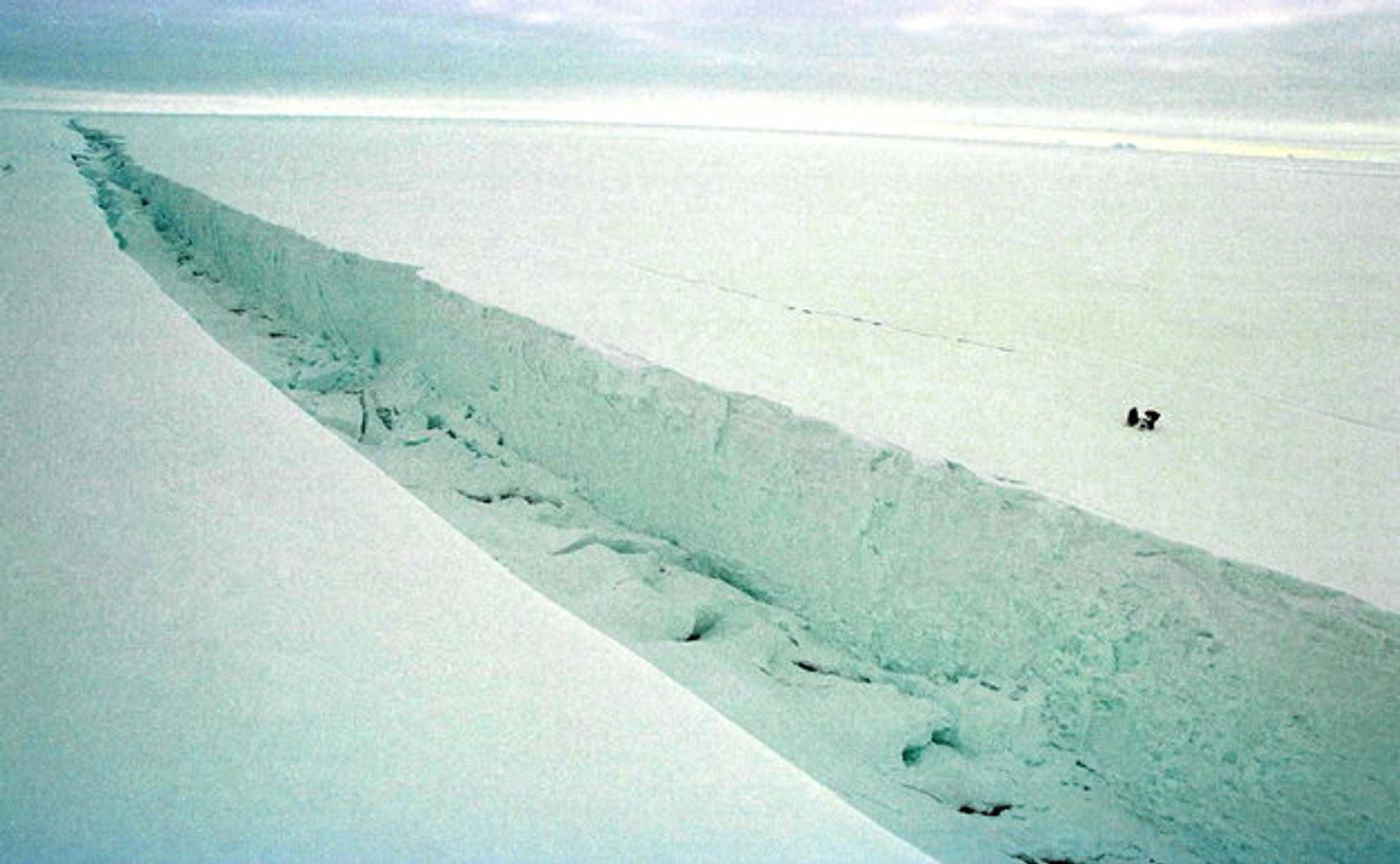Say Goodbye to Antarctica's Larsen C Shelf
Larsen C, a huge ice shelf on the Antarctic Peninsula, is getting ready to take its leave from the peninsula. The shelf sports a crack that is roughly 200 kilometers long and although it hadn’t moved since January, the rift grew 17 kilometers from May 25-31, putting it now only 13 kilometers from slipping into Weddell Sea. Previously the crack was parallel to the sea, but satellite imagery shows that the crack changed directions and is now facing the sea and preparing Larsen C for its inevitable calving. Scientists predict that the shelf will lose a chunk that accounts for more than 10% of its area.
This recent change in the fissure likely occurred because the shelf broke through a zone of resistant “suture ice” to reach colder, weaker ice. “The rift propagates quickly through the cold, brittle ice and slowly through zones of suture ice,” Swansea University's Professor Adrian Luckman explains.
It is unsure when the actual calving will occur. “Now that so little ice remains joining the iceberg to the ice shelf, we expect propagation to be quicker, but we really cannot know for sure how long it will take,” says Adrian Luckman of Swansea University, UK, and head of Project MIDAS, which monitors the ice shelf. “It could be any time, maybe within weeks, or possibly months.”
The calving of Larsen C won’t actually affect sea levels because the ice is already afloat. Nevertheless, Larsen C does prevent other glaciers from reaching the sea and experiencing the same fate, so it is possible that Larsen C’s calving could accelerate glacier loss on the rest of the Peninsula. “What’s happening at Larsen C may be a useful lesson as to what may eventually happen to the much larger and more critical ice shelves elsewhere in Antarctica,” Luckman says.
The ice shelf will likely float away from the peninsula slowly. "It's unlikely to be fast because the Weddell Sea is full of sea-ice, but it'll certainly be faster than the last few months of gradual parting. It will depend on the currents and winds," stated Luckman.
The BBC reports that within the last decades other large ice shelves have also met similar fates. Prince Gustav Channel, Larsen Inlet, Larsen A, Larsen B, Wordie, Muller, Jones Channel, and Wilkins are among those that have disintegrated, significantly retreated or lost substantial volume.
Sources: BBC, New Scientist









